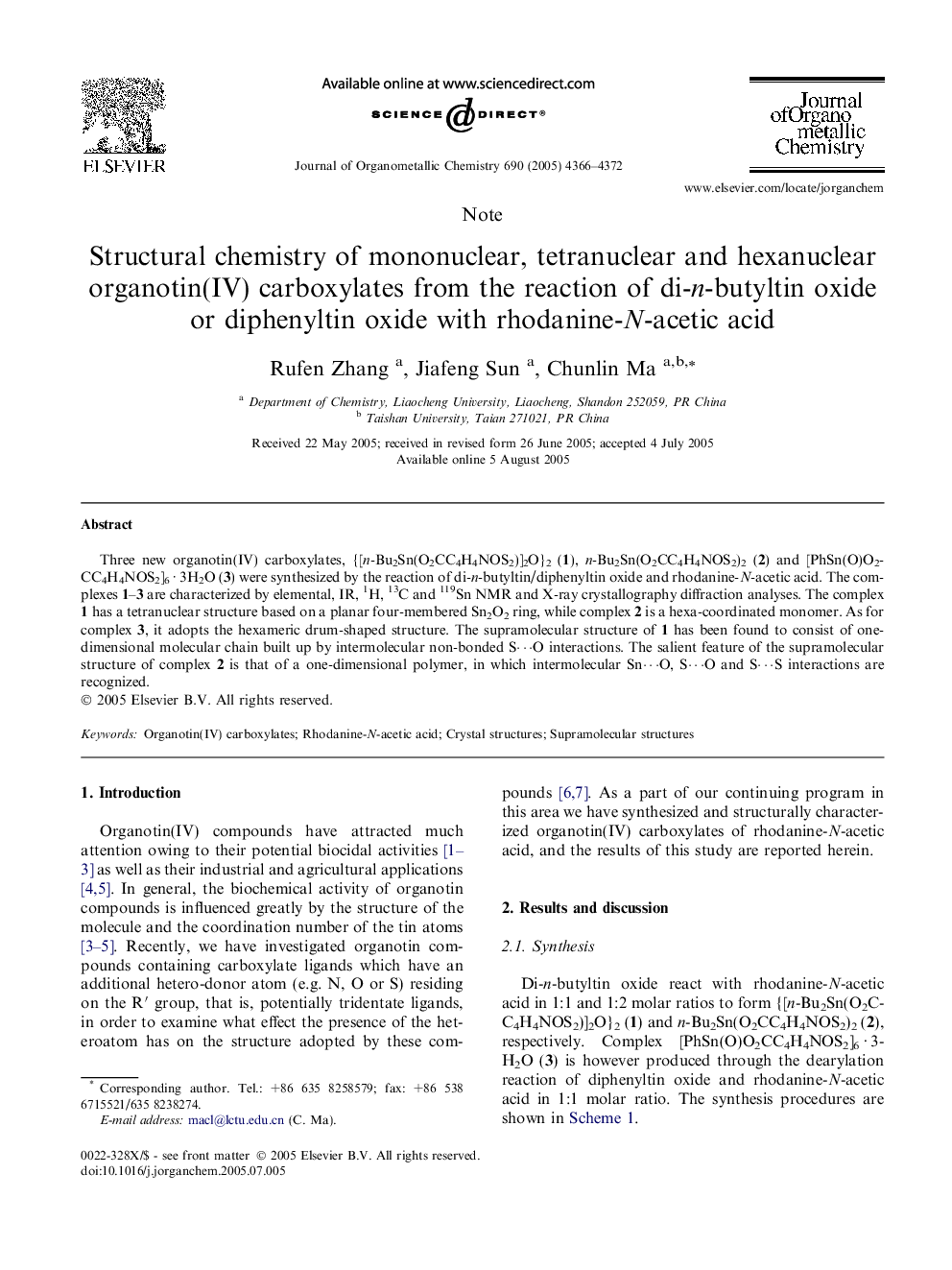| Article ID | Journal | Published Year | Pages | File Type |
|---|---|---|---|---|
| 1327833 | Journal of Organometallic Chemistry | 2005 | 7 Pages |
Three new organotin(IV) carboxylates, {[n-Bu2Sn(O2CC4H4NOS2)]2O}2 (1), n-Bu2Sn(O2CC4H4NOS2)2 (2) and [PhSn(O)O2CC4H4NOS2]6 · 3H2O (3) were synthesized by the reaction of di-n-butyltin/diphenyltin oxide and rhodanine-N-acetic acid. The complexes 1–3 are characterized by elemental, IR, 1H, 13C and 119Sn NMR and X-ray crystallography diffraction analyses. The complex 1 has a tetranuclear structure based on a planar four-membered Sn2O2 ring, while complex 2 is a hexa-coordinated monomer. As for complex 3, it adopts the hexameric drum-shaped structure. The supramolecular structure of 1 has been found to consist of one-dimensional molecular chain built up by intermolecular non-bonded S⋯O interactions. The salient feature of the supramolecular structure of complex 2 is that of a one-dimensional polymer, in which intermolecular Sn⋯O, S⋯O and S⋯S interactions are recognized.
Graphical abstractThree new organotin(IV) carboxylates, {[n-Bu2Sn(O2CC4H4NOS2)]2O}2 (1), n-Bu2Sn(O2CC4 H4NOS2)2 (2) and [PhSn(O)O2CC4H4 NOS2]6 · 3H2O (3) were synthesized by the reaction of di-n-butyltin/diphenyltin oxide and rhodanine-N-acetic acid. The complexes 1–3 are characterized by elemental, IR, 1H, 13C and 119Sn NMR and X-ray crystallography diffraction analyses. The complex 1 has a tetranuclear structure based on a planar four-membered Sn2O2 ring, while complex 2 is a hexa-coordinated monomer. As for complex 3, it adopts the hexameric drum-shaped structure.Figure optionsDownload full-size imageDownload as PowerPoint slide
